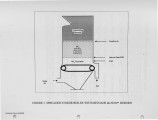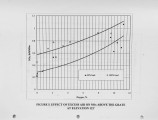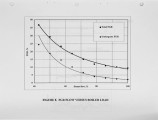| OCR Text |
Show The major advantages of METHANE de-NOX compared to the existing SNCR are: • The same or better NOx reduction in the range of 60 to 70% • Increase in boiler efficiency by 1 to 2% • Annualized cost benefit of about 0.34 million dollars for a 390 MMBtu/h boiler • Additional environmental benefits due to the reduction of CO2, SOx, particulates, and hydrocarbons, and the elimination of ammonia slip • Improvement in plant operation for start-up and load changing regimes • Exclusion of boiler outages for baghouse and economizer cleaning • Elimination of chemicals such as urea, ammonia, etc., for combustion product treatment BASELINE TESTING Baseline, full and partial load testing were conducted on one of the eight stoker units at the Richmond site. During baseline tests, the SNCR system was shut down per a prior agreement between Cogentrix and the Virginia Department of Environmental Quality. The goals of the baseline tests were to: obtain baseline data for :METHANE de-NOX system design, determine the location of NOx fonnation in the furnace, estimate the ratio of fuel boundlthennal NOx, evaluate furnace gas composition and temperature profiles, determine the effect of major operating parameters on emissions and furnace temperatures, and define the effect of high excess air on superheated steam temperature and boiler capacity. The variable parameters of the baseline tests were: combustion zone stoichiometry, total excess air, undergrate and overfire air split, undergrate air distribution, and coal heat input. A total of 16 tests were conducted as part of the baseline test plan. Two loads were tested, 60 and 100%, total excess air was varied with oxygen concentrations in flue gas from 1 to 8%. Undergrate to overfire air ratio was varied from 70/30 to 90/10. Undergrate air distribution was varied via positioning of four dampers on each side of the stoker unit. Baseline test measurements included basic boiler perfonnance, spreader stoker perfonnance, furnace gas compositions and temperatures, coal and ash sample analyses, and emissions data. In-furnace data were obtained at three elevations using water-cooled probes. Data was obtained above the grate, in the middle of the furnace, and at the exit of the furnace. Results of baseline tests showed that it should be possible to reduce NOx emissions by at least 50% using METHANE de-NOX reburning technology. Baseline test results for the effect of excess air on NOx and CO emissions at 100% load are shown in Figure 2. The data show that NOx emissions decrease by 40% as the excess air is reduced from 4.5 to 2% oxygen whereas the CO concentration increases as the excess air is reduced. Normal operation of the boiler at full load is 4.5% oxygen in the flue gas. There was essentially no effect on NOx concentration (average values measured at the exit of the furnace) due to varying the undergrate to overfire air ratio in the range 70/30 to 90/10. The effect of distribution of undergrate air on emissions at full load is shown in Figure 3. Below the abscissa values of 1, 2, and 3 are shown symbols representing the undergrate air damper positions. Position " 1" indicates that most of the air was 5 |






















